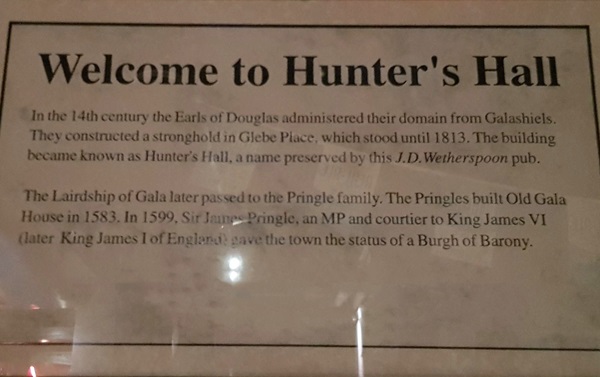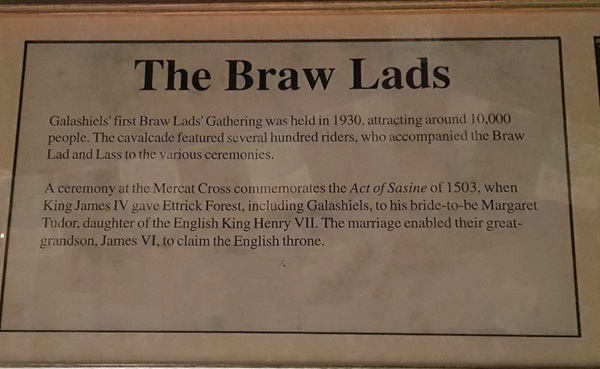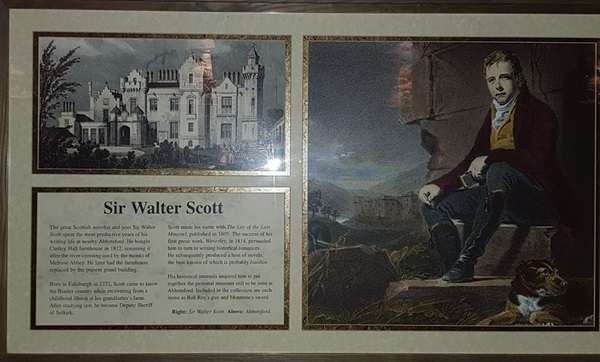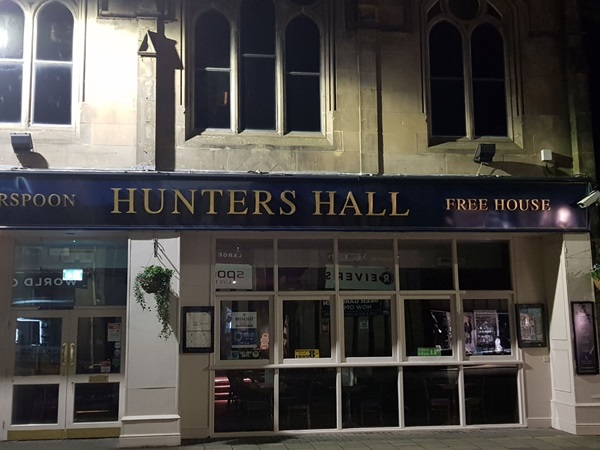This pub takes its name from the tower used by the Earls of Douglas, who once administered the area. The tower, known locally as ‘Hunters Hall’, was demolished in 1813 to make way for the old town school.
Text about Hunter’s Hall.

The text reads: In the 14th century the Earls of Douglas administered their domain from Galashiels. They constructed a stronghold in Glebe Place, which stood until 1813. The building became known as Hunter’s Hall, a name preserved by this J D Wetherspoon pub.
The Lairdship of Gala later passed to the Pringle family. The Pringles built Old Gala House in 1583. In 1599, Sir James Pringle, an MP and courtier to King James VI (later King James I of England) gave the town the status of Burgh of Barony.
Text about the Braw Lads Gathering.

The text reads: Galashiels’ first Braw Lad’s Gathering was held in 1930, attracting around 10,000 people. The cavalcade featured several hundred riders, who accompanied the Braw Lad and Lass to the various ceremonies.
A ceremony at the Mercat Cross commemorates the Act of Sasine of 1503, when King James IV gave Ettrick Forest, including Galashiels, to his bride-to-be Margaret Tudor, daughter of English King Henry VII. The marriage enabled their great-grandson, James VI, to claim the English throne.
Prints and text about Sir Walter Scott.

The text reads: The great Scottish novelist and poet Sir Walter Scott spent the most productive years of his writing life at nearby Abbotsford. He bought Cartley Hall farmhouse in 1812, renaming it after the river-crossing used by the monks of Melrose Abbey. He later had the farmhouse replaced by the present grand building.
Born in Edinburgh in 1771, Scott came to know the border country while recovering from a childhood illness at his grandfather’s farm. After studying law, he became Deputy Sheriff of Selkirk.
Scott made his name with The Lay of the Last Minstrel, published in 1805. The success of his first prose work, Waverley, in 1814, persuaded him to turn to writing historical romances. He subsequently produced a host of novels, the best-known of which is probably Ivanhoe.
His historical interests inspired him to put together the personal museum still to be seen at Abbotsford. Included in the collection are such items as Rob Roy’s gun and Montrose’s sword.
Right: Sir Walter Scott
Above: Abbotsford
External photograph of the building – main entrance.

Click here to view a video tour of the recent refurbishment of the pub. It has since extended into the former butcher's next door and opened up the barn in the beer garden.
If you have information on the history of this pub, then we’d like you to share it with us. Please e-mail all information to: pubhistories@jdwetherspoon.co.uk